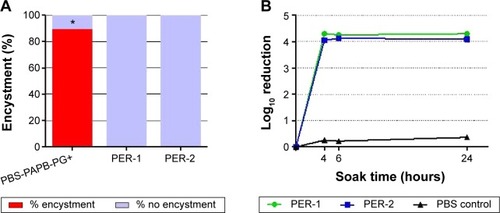Figures & data
Table 1 Summary of test solutions in this study
Figure 1 Impact of buffer agents on Acanthamoeba castellanii encystment rates.
Abbreviations: BBS, borate-buffered saline; BBS-PAPB-PG+, solution containing BBS, PAPB and PG; BBS-PAPB-PG−, solution containing BBS and PAPB, without PG; PAPB, polyaminopropyl biguanide; PBS, phosphate-buffered saline; PBS-PAPB-PG+, solution containing PBS, PAPB and PG; PBS-PAPB-PG−, solution containing PBS and PAPB, without PG; PG, propylene glycol; POS, positive.
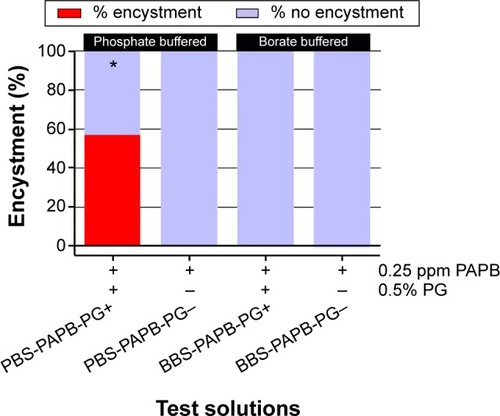
Figure 2 Encystment rates of Acanthamoeba castellanii exposed to PBS-PAPB-PG+ control and to 1% PG with varying concentrations of H2O2.
Abbreviations: PAPB, polyaminopropyl biguanide; PBS, phosphate-buffered saline; PBS-PAPB-PG+, solution containing PBS, PAPB and PG; PG, propylene glycol.
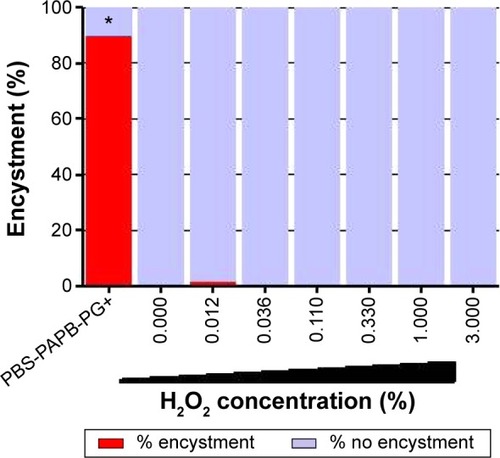
Figure 3 Encystment rates of Acanthamoeba castellanii exposed to phosphate-buffered solutions that contained either 0.25 ppm polyaminopropyl biguanide (PAPB) or 3% H2O2 with increasing concentrations of povidone (POV) and propylene glycol (PG).
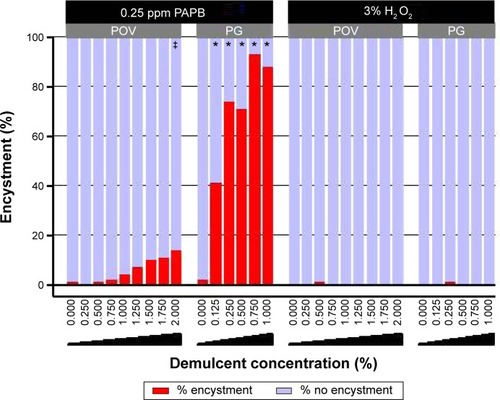
Figure 4 Encystment rates of Acanthamoeba castellanii trophozoites exposed to PeroxiClear (PER-1), PeroxiClear solution lacking propylene glycol (PER-1a), PeroxiClear solution lacking H2O2 (PER-1b), and PeroxiClear solution lacking propylene glycol and H2O2 (PER-1c) for 24 hours, 7 days, and 14 days. No significant differences were observed across any of the solutions tested regardless of the time point (P>0.05).
Abbreviation: PG, propylene glycol.
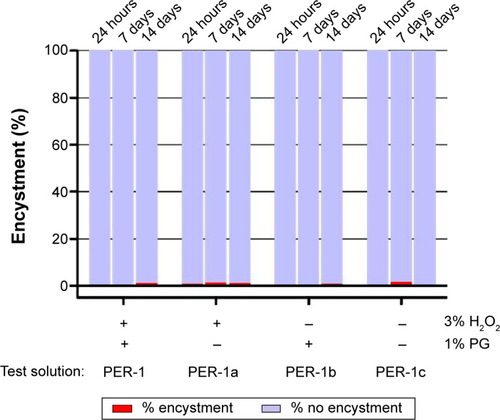
Figure 5 (A) Encystment rates of Acanthamoeba castellanii exposed to PBS-PAPB-PG+ control, PeroxiClear (PER-1), and Clear Care® (PER-2) solutions. Encystment rates for both PER-1 and PER-2 were <1% after 24 hours’ incubation, significantly (*P<0.05) lower than the positive control solution. (B) For stand-alone biocidal efficacy testing, log10 reduction values of A. castellanii exposed to PER-1, and PER-2 solutions reached complete kill at 6 and 24 hours, while PBS control did not.
Abbreviations: PAPB, polyaminopropyl biguanide; PBS, phosphate-buffered saline; PBS-PAPB-PG+, solution containing PBS, PAPB and PG.
